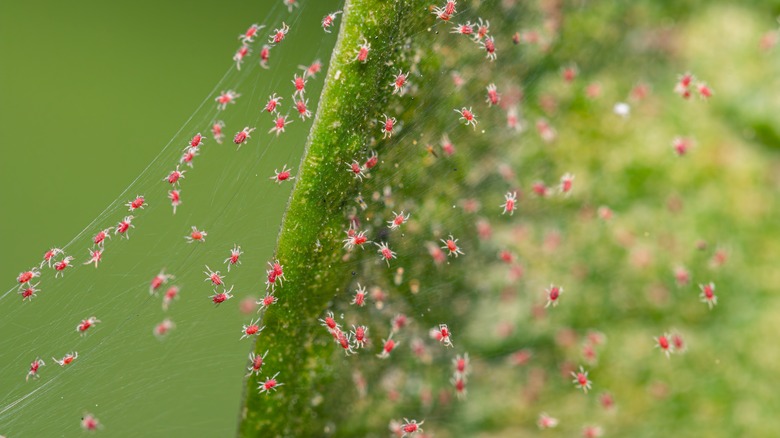How To Protect Your Japanese Maple From Destructive Spider Mites
We may receive a commission on purchases made from links.
The Japanese maple (Acer palmatum) stands as a jewel in many gardens, admired for its stunning foliage and graceful structure. Its vibrant, delicate leaves and remarkable autumn hues make it a prized yard tree worldwide. However, cultivating a Japanese maple poses its fair share of challenges, with one notable adversary being the spider mite. To protect your Japanese maple from these pests, there are a few solutions you can try: Water spraying, introducing beneficial insects, and using horticultural soap or oil.
The Japanese maple's intricate foliage ranges from vibrant greens to deep burgundies, creating a stunning display in landscapes. Its delicate leaves, deeply lobed and finely serrated, contribute to the tree's overall aesthetic appeal. Beyond its beauty, the Japanese maple is known for its adaptability, thriving in diverse climates and soil conditions.
While resilient, Japanese maples are not immune to pests, and spider mites are particularly troublesome. These tiny arachnids, often minuscule and barely visible to the naked eye, thrive in warm, dry conditions. As they feed on the sap within the leaf cells, they leave behind distinctive signs of their presence. These include stippling (tiny, light-colored dots or specks on the surface of leaves), webbing (fine silk webbing may appear, especially on the undersides of leaves), and leaf discoloration (from vibrant green to a yellow or bronze hue), signaling a decline in the tree's health. This is why addressing spider mite infestations promptly is crucial to maintaining the vitality of your Japanese maple.
Ways to combat a spider mite infestation
Due to their diminutive size (about 1/50 inch), it helps to use a magnifying glass to identify spider mites. They may be red, yellow, brown, or black in color, with eight legs. Upon noticing the initial signs of stippling or webbing on your beloved maple, act promptly to prevent them from proliferating.
For early-stage infestations, apply a forceful spray of water directed at the undersides of leaves where mites often congregate. Doing this can dislodge and wash away the pests. Regularly hose down your Japanese maple, ensuring the water pressure is sufficient to reach hidden areas. You can also use specially formulated soaps or oils like Safer 5118-6 Insect Killing Soap Concentrate or Natural Guard® Horticultural Oil, to disrupt the protective coatings of spider mites, ultimately leading to their demise. Follow package instructions and apply the product directly to the affected foliage, including the upper and lower leaf surfaces for comprehensive coverage. Introducing beneficial insects can also be highly effective. Predatory mites, such as Phytoseiulus persimilis, feed on spider mites and can be released onto the tree. Ladybugs are also voracious mite predators. Encourage these beneficial insects by planting flowering herbs like dill and fennel nearby.
In more severe cases, you can employ chemical solutions like acaricides (including miticides) specifically targeting members of the Acari arachnid subclass, which includes ticks and mites. However, exercise caution to avoid harming beneficial insects, always follow manufacturer's instructions, and consider using them only as a last resort.
Preventing spider mite infestations
As we all know, prevention is the first line of defense when it comes to protecting our beloved garden plants, and the same holds true in ensuring spider mites don't infest our gorgeous Japanese maples. Preventing spider mite infestations involves strategic planning and incorporating natural deterrents into your garden. Consider planting species known for repelling spider mites, such as thyme, lavender, and garlic. These plants release compounds that discourage mites from settling in the vicinity.
Beneficial insects play a vital role in maintaining a balanced ecosystem. Lacewings and predatory mites, for instance, are natural enemies of spider mites. Besides planting herbs like fennel and dill, cultivating nectar-rich flowers like alyssum and cosmos can also help attract helpful insects into your yard, providing them with a habitat where they can thrive and help keep mite populations in check. Also, use only sterilized tools when doing gardening and yard work, and make a habit of checking your plants and trees for pests, particularly during summer when spider mites are most active.
By introducing a variety of resistant plants, attracting beneficial insects, and implementing good gardening practices, you can create an environment that naturally repels spider mites, safeguarding the health and beauty of your Japanese maple.


